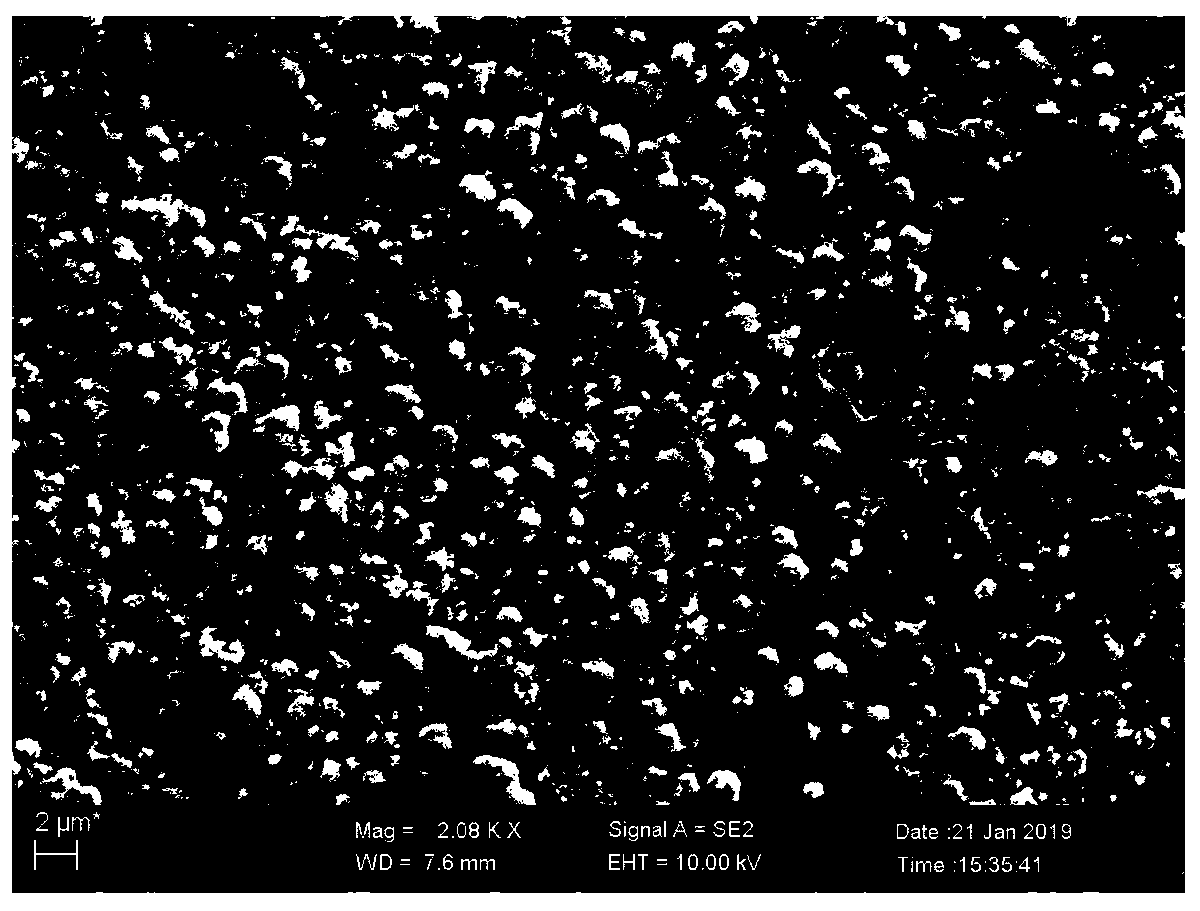Additive for zinc-based battery
A zinc-based battery and additive technology, which is applied in battery electrodes, alkaline storage batteries, battery pack components, etc., can solve the problems of restricting the application and development of nickel-zinc batteries and the difficulty of further improving the cycle performance of nickel-zinc batteries, and achieves suppression of zinc branches. Crystal formation, avoiding battery failure, and high process repeatability
- Summary
- Abstract
- Description
- Claims
- Application Information
AI Technical Summary
Problems solved by technology
Method used
Image
Examples
Embodiment 1
[0037] An additive for a zinc-based battery, which is prepared through the following steps:
[0038] Add 8g of metal gallium, 2g of metal indium, and 1g of metal tin into a mortar at room temperature, grind and stir for about 12 hours to obtain the additive.
[0039] Assembly of nickel-zinc batteries: The obtained additives are coated on the separator of nickel-zinc batteries for normal nickel-zinc battery assembly.
[0040] The test method for the electrochemical performance of the nickel-zinc battery is as follows:
[0041] (1) The simulated battery adopts a button-type CR2032 system, in which the negative electrode is zinc oxide and the positive electrode is nickel hydroxide.
[0042] (2) The experiment adopts the constant current charge and discharge method to test and analyze the reversible capacity and cycle performance of the electrode material. The charge and discharge system is: voltage range: 1.2-2.0V; cycle number: 1-1500 times.
[0043] Characterize the morpholo...
Embodiment 2
[0049] This embodiment provides a nickel-zinc battery. The difference from embodiment 1 is that the additive described in embodiment 1 is placed on the zinc negative electrode.
[0050] Corresponding electrical performance tests were carried out, and the results are as follows: when charging and discharging at 2C, the stable specific capacity is greater than 550mAh / g; when charging and discharging at the above rate, the capacity can maintain 100% of the initial capacity after 500 repeated charging and discharging.
Embodiment 3
[0052] This embodiment provides a nickel-zinc battery. The difference from embodiment 1 is that the additive described in embodiment 1 is placed in the electrolyte.
[0053] Corresponding electrical performance tests were carried out, and the results are as follows: when charging and discharging at 2C, the stable specific capacity is greater than 550mAh / g; when charging and discharging at the above rate, the capacity can maintain 100% of the initial capacity after 500 repeated charging and discharging.
PUM
| Property | Measurement | Unit |
|---|---|---|
| size | aaaaa | aaaaa |
| size | aaaaa | aaaaa |
Abstract
Description
Claims
Application Information
 Login to View More
Login to View More - R&D
- Intellectual Property
- Life Sciences
- Materials
- Tech Scout
- Unparalleled Data Quality
- Higher Quality Content
- 60% Fewer Hallucinations
Browse by: Latest US Patents, China's latest patents, Technical Efficacy Thesaurus, Application Domain, Technology Topic, Popular Technical Reports.
© 2025 PatSnap. All rights reserved.Legal|Privacy policy|Modern Slavery Act Transparency Statement|Sitemap|About US| Contact US: help@patsnap.com



